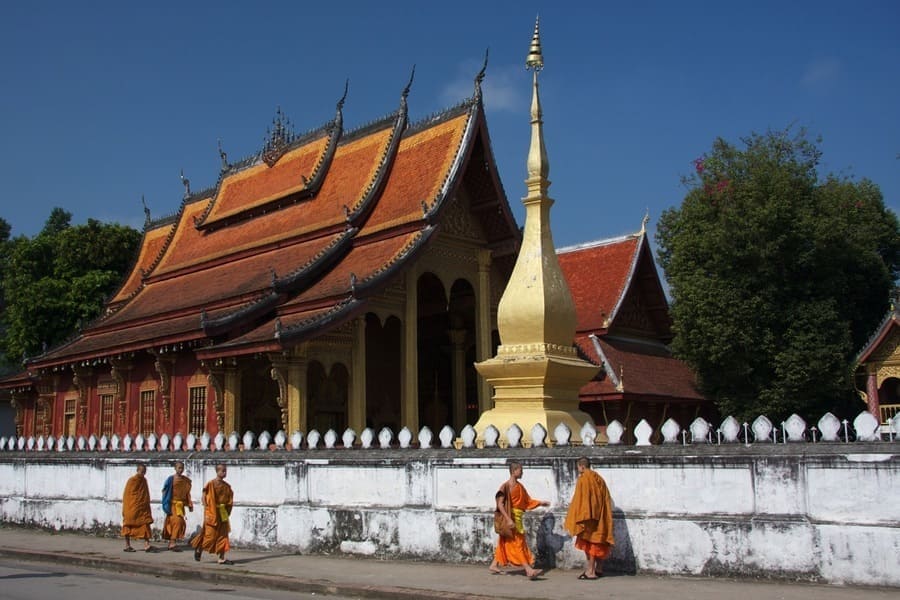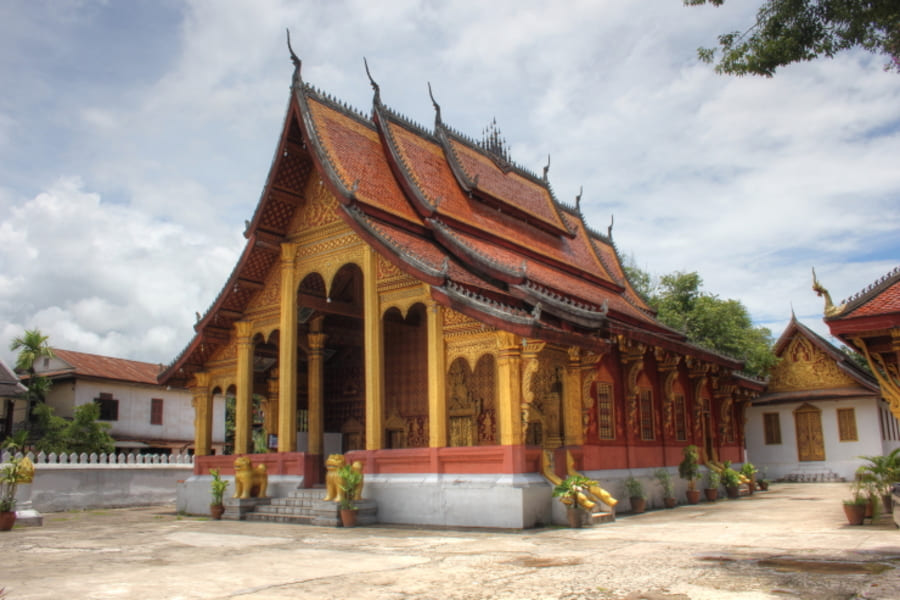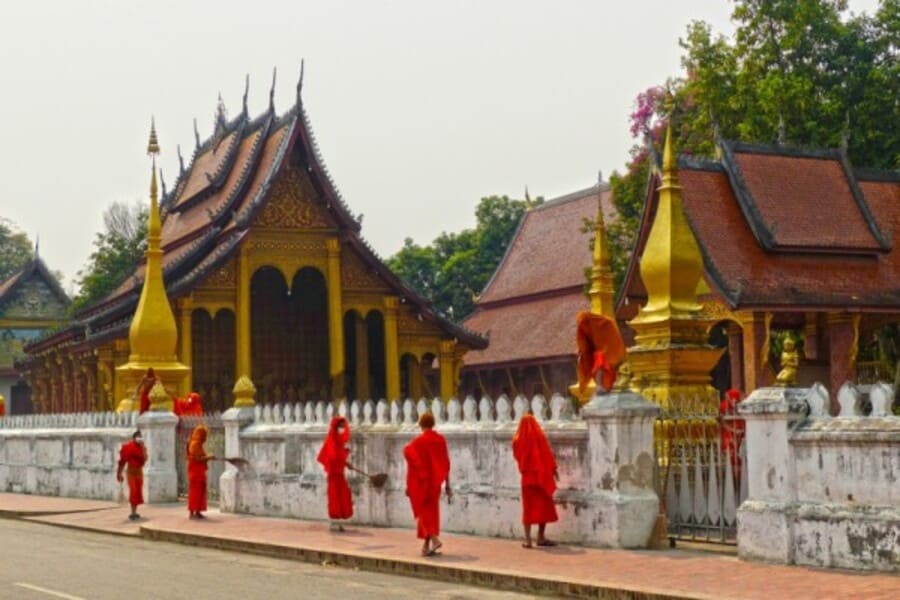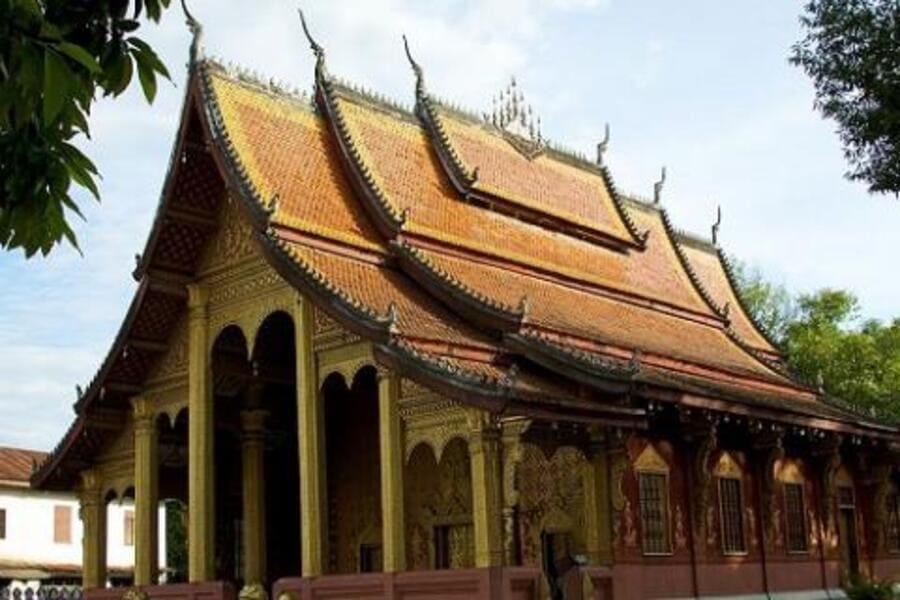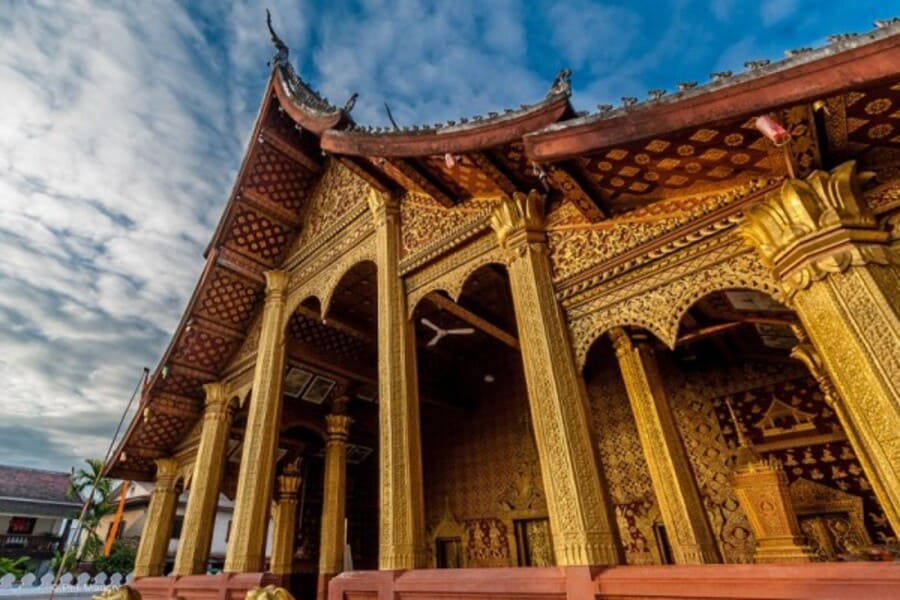Embark on an enchanting laos tours and discover the timeless beauty of Wat Sen, also known as Wat Sene Souk Haram, nestled amidst the UNESCO World Heritage Site of Luang Prabang. This stunning temple, steeped in history and spirituality, beckons visitors with its graceful architecture and serene ambiance.
An Overview of Wat Sen temple
Nestled within the charming UNESCO World Heritage Site of Luang Prabang, Wat Sen, also known as Wat Sene Souk Haram, stands as a testament to Laos' rich cultural and spiritual heritage. This magnificent temple, with its graceful architecture and serene ambiance, beckons visitors to immerse themselves in its timeless beauty and tranquility.
Wat Sen holds a significant place in the hearts of locals and pilgrims alike. Stepping through its ornate gates, visitors are greeted by the soft sounds of chanting monks and the subtle scent of burning incense, inviting them to explore its revered prayer halls, towering stupas, and peaceful courtyards.
The History of Wat Sen temple
Wat Sen, also known as Wat Sene Souk Haram, carries a rich history that intertwines with the cultural tapestry of Luang Prabang, Laos. The temple's origins date back to the early 18th century when it was commissioned by King Kitsarath of the Lan Xang Kingdom. Constructed between 1718 and 1724, Wat Sen was built as a tribute to King Kitsarath's reign and as a place of worship for the local community.
Throughout its history, Wat Sen has undergone several renovations and expansions, with each iteration adding to its architectural splendor and cultural significance. The temple's name, "Wat Sen," translates to "100,000 treasures," reflecting the abundance of precious relics and artifacts housed within its sacred halls.
Wat Sen played a pivotal role in religious and social life in Luang Prabang, serving as a center for Buddhist teachings, ceremonies, and community gatherings. The temple's tranquil grounds provided a sanctuary for meditation and contemplation, attracting monks, devotees, and visitors seeking spiritual enlightenment.
Despite periods of political unrest and cultural upheaval, Wat Sen has remained a steadfast symbol of faith and resilience in Luang Prabang. Today, the temple stands as a cherished cultural landmark, preserving the legacy of Laos' religious heritage and serving as a beacon of peace and tranquility in the bustling city.
The Architecture of Wat Sen temple
The architecture of Wat Sen temple in Luang Prabang, Laos, is a remarkable blend of traditional Lao and Siamese (Thai) architectural styles, reflecting the cultural influences that have shaped the region over centuries. The temple complex is characterized by its elegant design, intricate details, and harmonious proportions.
The main prayer hall, or "sim," is the focal point of Wat Sen's architecture. It features a multi-tiered roof with gracefully upturned eaves, adorned with elaborate finials and gilded ornamentation. The exterior walls of the sim are embellished with intricate carvings depicting scenes from Buddhist mythology, floral motifs, and celestial beings, creating a visually stunning facade.
Within the prayer hall, visitors are greeted by a spacious interior adorned with ornate decorations and sacred artifacts. Intricately carved wooden pillars support the roof structure, while colorful murals depicting the life of the Buddha adorn the walls. The central altar houses a revered Buddha image, surrounded by offerings of flowers, candles, and incense.
Surrounding the main prayer hall are smaller structures and pavilions, including chapels, stupas, and meditation halls, each showcasing unique architectural features and decorative elements. The temple grounds are landscaped with lush gardens, tranquil courtyards, and shaded walkways, providing peaceful spaces for contemplation and meditation.
Visitors to Wat Sen can admire its elegant architecture, intricate decorations, and serene atmosphere while paying homage to the centuries-old traditions and beliefs that continue to shape the cultural identity of Luang Prabang. As a living testament to Laos' spiritual and architectural legacy, Wat Sen remains a timeless treasure awaiting discovery by travelers from around the world.
How to get to Wat Sen temple?
Wat Sen temple, also known as Wat Sene Souk Haram, is located in Luang Prabang, Laos. You can reach it using various means of transportation:
- Walking: If you're staying in the central area of Luang Prabang, it's possible to walk to Wat Sen temple. The temple is located near the center of town, making it accessible on foot from many accommodations and other attractions.
- Bicycle: Renting a bicycle is a popular way to explore Luang Prabang. Many guesthouses and rental shops offer bicycles for rent, and you can easily cycle to Wat Sen temple from most parts of the city.
- Tuk-tuk: Tuk-tuks are ubiquitous in Luang Prabang and are readily available for hire. You can simply flag one down on the street or ask your accommodation to arrange a tuk-tuk to take you to Wat Sen temple. Negotiate the fare with the driver before starting your journey.
- Motorbike: If you're comfortable riding a motorbike, you can rent one from various rental shops in Luang Prabang and drive to Wat Sen temple. However, be aware that traffic conditions and road regulations may differ from what you're accustomed to, so exercise caution.
- Taxi: Taxis are less common in Luang Prabang compared to tuk-tuks, but you can still find them around the city center. You can also use ride-hailing apps like Grab to book a taxi to Wat Sen temple.
Attractions near Wat Sen temple for Tourists
Near Wat Sen temple in Luang Prabang, visitors will find a plethora of cultural and historical attractions to explore. Some notable nearby destinations include:
Royal Palace Museum (Haw Kham):
Located just a short distance from Wat Sen, the Royal Palace Museum offers insight into Laos' royal history and culture. Visitors can explore the former royal residence, which houses a collection of artifacts, regalia, and religious treasures.
Mount Phousi:
Rising above the city of Luang Prabang, Mount Phousi offers panoramic views of the surrounding landscape. Visitors can climb the hill to reach the summit, where they can admire breathtaking sunsets and panoramic views of the Mekong River and city below.
Wat Xieng Thong:
One of the most revered temples in Luang Prabang, Wat Xieng Thong is known for its elegant architecture, intricate mosaics, and gilded stupa. The temple complex also features beautifully landscaped gardens and historic pavilions.
Night Market:
The bustling Night Market in Luang Prabang is a vibrant hub of activity, offering a wide range of local handicrafts, textiles, and souvenirs. Visitors can browse the stalls, sample local cuisine, and soak up the lively atmosphere.
Wat Mai Souvanna Poomaram:
Another significant temple in Luang Prabang, Wat Mai Souvannapoumaram is known for its striking red and gold facade, intricate carvings, and sacred relics. The temple's serene atmosphere and ornate architecture make it a must-visit destination for travelers.
Join a guided tour to explore the temple's revered prayer halls, towering stupas, and tranquil courtyards, and immerse yourself in the sacred atmosphere of this revered spiritual sanctuary. Whether marveling at the craftsmanship of its decorations or participating in traditional Buddhist rituals, a visit to Wat Sen promises an unforgettable experience that will leave a lasting impression.

